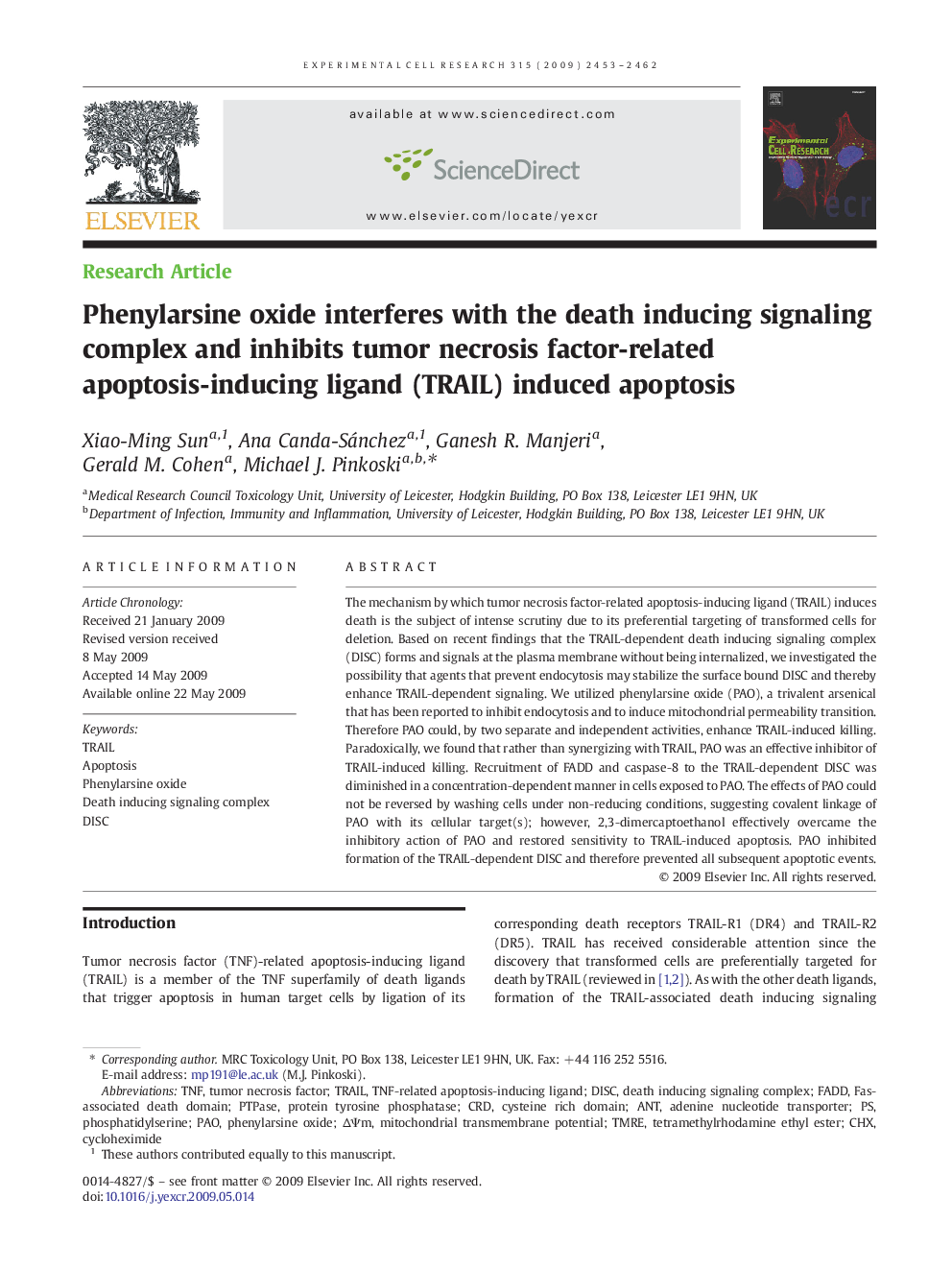| Article ID | Journal | Published Year | Pages | File Type |
|---|---|---|---|---|
| 2131205 | Experimental Cell Research | 2009 | 10 Pages |
The mechanism by which tumor necrosis factor-related apoptosis-inducing ligand (TRAIL) induces death is the subject of intense scrutiny due to its preferential targeting of transformed cells for deletion. Based on recent findings that the TRAIL-dependent death inducing signaling complex (DISC) forms and signals at the plasma membrane without being internalized, we investigated the possibility that agents that prevent endocytosis may stabilize the surface bound DISC and thereby enhance TRAIL-dependent signaling. We utilized phenylarsine oxide (PAO), a trivalent arsenical that has been reported to inhibit endocytosis and to induce mitochondrial permeability transition. Therefore PAO could, by two separate and independent activities, enhance TRAIL-induced killing. Paradoxically, we found that rather than synergizing with TRAIL, PAO was an effective inhibitor of TRAIL-induced killing. Recruitment of FADD and caspase-8 to the TRAIL-dependent DISC was diminished in a concentration-dependent manner in cells exposed to PAO. The effects of PAO could not be reversed by washing cells under non-reducing conditions, suggesting covalent linkage of PAO with its cellular target(s); however, 2,3-dimercaptoethanol effectively overcame the inhibitory action of PAO and restored sensitivity to TRAIL-induced apoptosis. PAO inhibited formation of the TRAIL-dependent DISC and therefore prevented all subsequent apoptotic events.
